In keeping guinea pigs, we always want to give our cavies the things we eat. But, guinea pigs are herbivores and vegetarians, so their diet is limited to foods that grow from the ground. However, not all vegetarian foods are good for them. Today, we will explore if mange tout is safe for guinea pigs as their food.
Guinea pigs can eat mange tout, also called snow peas. This also means that the pea and its pod can be consumed by guinea pigs. They like the taste of this veggie, and it has plenty of good nutrients as well.
The great thing about them is that they are fully edible, unlike other pea types. We have mentioned above that both the pea and the pod can be eaten by the guinea pigs. But, as with any vegetarian food or veggie, we must see all the pros and cons for them. Read below what makes snow peas/mange tout so special for our furry pets!
Table of Content
Is Mange Tout Good for Guinea Pigs? | Health Benefits
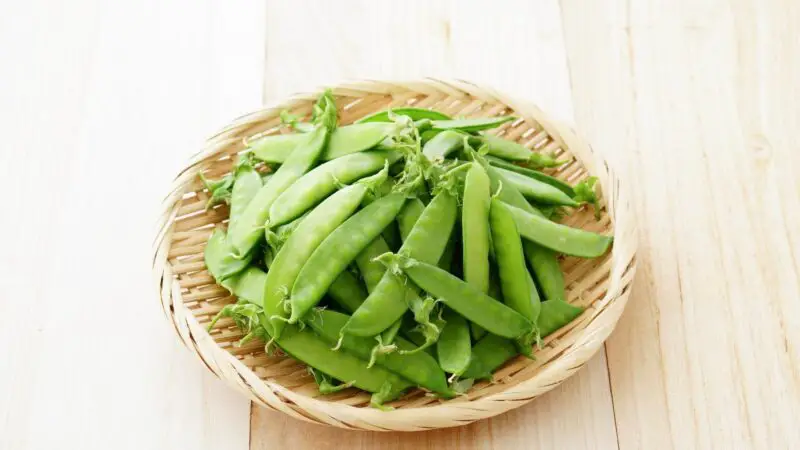
Eating mange tout has a lot of benefits. Some of them are the following:
- Healthy weight – Your guinea pig will keep its healthy weight with these peas. They won’t add on more weight, so don’t worry about the risk of obesity.
- Energy – The carbs and proteins will make your guinea pig energetic and cheerful for all of the daily activities, from playing to resting.
- The health of the cardiovascular system – With a low amount of fat and zero cholesterol, the blood vessels will not get clogged and the heart will work in a healthy way. There will be less risk of stroke, heart attack, or hypertension among other common problems of this kind.
- Healthy development of the fetus during pregnancy – The folate ensures the fetus in the pregnant guinea pig develops well in perfect health before birth. Also, folate prevents any defects prior to birth.
- The health of organs and less stress – The B6 vitamin keeps all organs healthy, such as the liver. It also keeps eyesight healthy, prevents anemia, and reduces stress which will contribute to better sleep.
- Healthy blood clotting – The vitamin K will act quickly for fast and healthy blood clotting in case a serious bleeding injury occurs.
- Prevention of scurvy – There is lots of vitamin C. If cavies don’t have enough of this vitamin, they are at fatal risk from scurvy, with the symptoms of rough coat, swelling in joints, weight loss, and diarrhea.
- Antioxidant protection – Vitamin A removes all free radical damage. These free radicals can cause early aging and many diseases. So, with vitamin A, the overall immunity is improved.
- Strong and healthy blood – The iron in snow peas prevents anemia, and this makes blood strong. Without enough iron, there is fatigue, no appetite, no energy and more risks of blood problems.
Nutrition Facts of Mange Tout
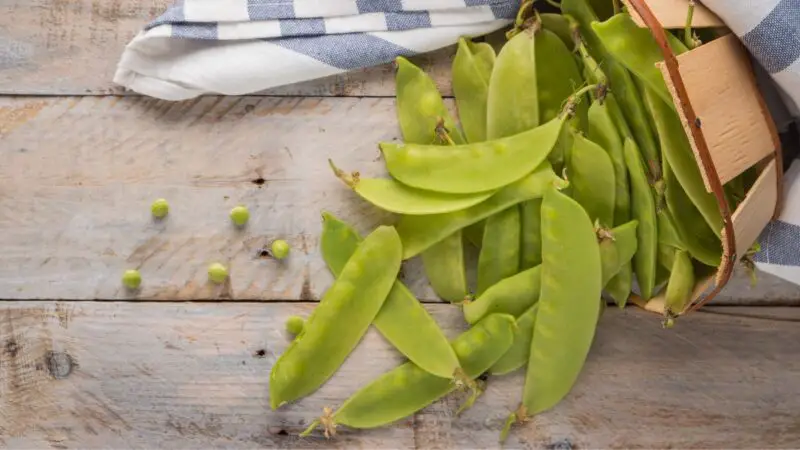
Nutrition facts for 100 g (3 oz) of snow peas:
- Low in calories – 42 calories. Whether your guinea pig is on a diet or not, these peas will not affect its weight at all.
- Carbs and proteins – 7.5 g carbs and 2.8 g proteins. Two major sources of energy.
- Sugar – 4g. This is not very good for guinea pigs because guinea pigs are not good at digesting sugars, even if it’s from vegetarian foods.
- Low in fat – 0.2g. If they don’t eat the right kinds of foods, guinea pigs can quickly gain fat. Since mango tout is low in fat, it benefits them.
- Pantothenic acid aka B5 – 7%. This vitamin turns carbs into energy, it converts them so that the organism instantly gets energetic and active. Also, B5 soothes the nervous system.
- Folate – 10%. This B vitamin is essential for the division of cells and for healthy development of fetuses in pregnant guinea pigs.
- Vitamin B6 – 8%. The B6 vitamin keeps all organs healthy; cleansed liver, better cognitive functioning, better eyesight, no anemia, no pains, and removing stress.
- Vitamin K – 31%. Vitamin K makes blood clotting healthier. So, in case of accident or injury, there will be less blood loss.
- Vitamin C – 100%. There isn’t better news than this! Guinea pigs will be thrilled to get food filled with their essential vitamin for survival and health.
- Vitamin A – 22%. This vitamin is a powerful antioxidant. It keeps the lungs, vision, heart, kidneys, and skin healthy. And with this, the whole immune system will be healthy as well.
- Calcium – 4%. This mineral is good for healthy bones, but not for fully grown guinea pigs.
- Iron – 12%. This compound makes the blood healthy and not prone to anemia. With this, the organism has more energy and overall health.
- Cholesterol – Zero cholesterol means no problems for the heart or any risks of heart-related issues and clogged arteries!
Is Mange Tout Bad for Guinea Pigs? | Possible Risks
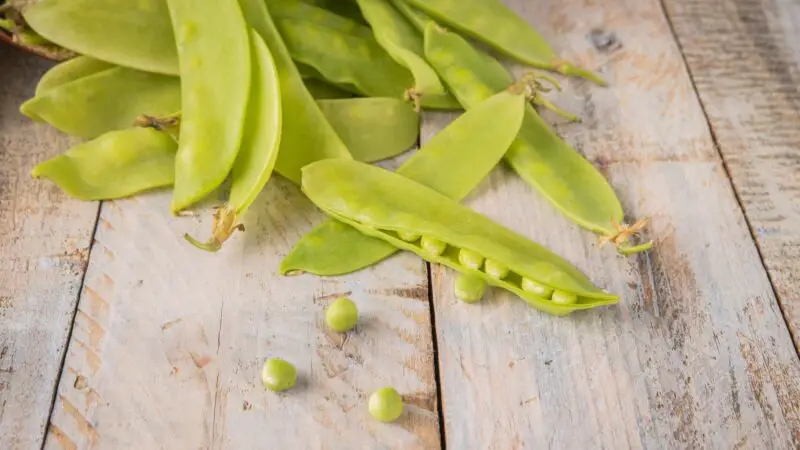
Mango tout has risks, particularly if your guinea pigs consume more of it. Some of them are as follows:
- Painful digestion – Because snow peas have sugars, this can make digestion painful and problematic. The stomachs of guinea pigs are very fragile, especially for sugar digesting (regardless if it’s fruit, veggie, or another treat). If some vegetarian food has sugar, serve this in moderation to avoid bloating and pains in the guinea pig.
- Urinary complications – There is calcium in snow peas. Grown guinea pigs don’t need calcium in large amounts. Otherwise, they will get kidney stones or bladder stones. Complications like pain during urinating, bloody urine, and urinary infections that are frequent and most serious can result in renal failure which is fatal.
Serving and Frequency of Mange Tout for Guinea Pigs
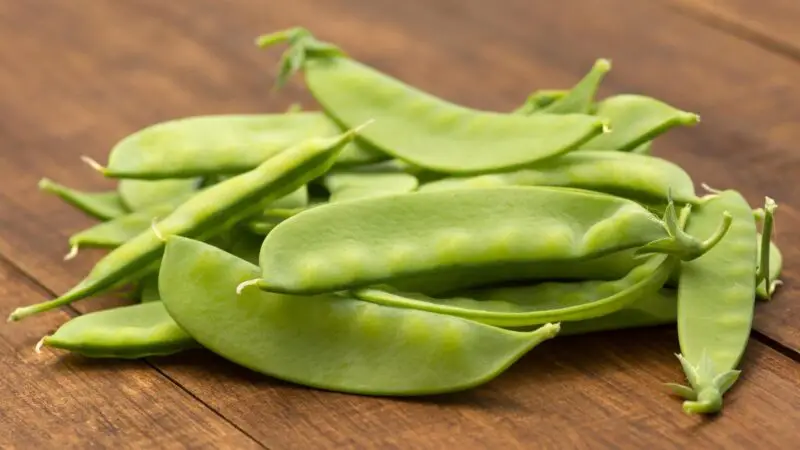
You can feed the cavy both the peas and the pod on a regular basis because snow peas are incredibly rich in vitamin C. Three times a week ought to be adequate.
You will have fewer options for a varied diet if you eat them more frequently than three times per week, so incorporate other healthy foods in your diet in addition to these lovely snow peas. Additionally, if you give them more frequently than three times per week, the calcium in them may cause urinary issues.
Quick Facts on Mange Tout
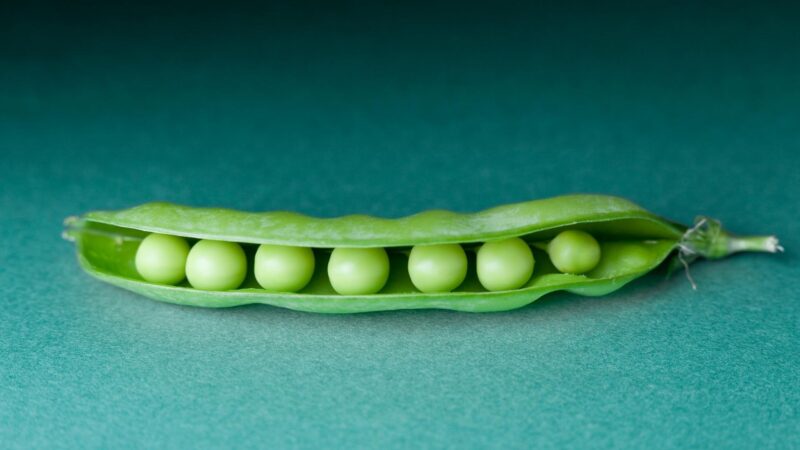
- The snow peas can be eaten as a whole, both the pea and the pod. Hence, the name ‘mange tout,’ which is a French word.
- These peas are native to the Mediterranean area.
- They are also commonly known as ‘Chinese pea pods.’
- Ancient Romans grew over 37 kinds of peas.
- The world record of eating peas with a chopstick was made by Janet Harris of Sussex. She ate 7.175 peas!
- Thomas Jefferson had more than 30 types of peas grown on his plantations.
We have also made a full list of foods that guinea pigs can and can’t eat (150+ Types of Foods). Be sure to also check our recommended products page for everything you will ever need to assure a happy life for your guinea pigs. Hope this information was helpful and you have found the answer you were looking for.
List of Sources
Caring for Your Pet Guinea Pig
Vitamin C Requirements of the Guinea-Pig
Nutrient Requirements of Laboratory Animals: Fourth Revised Edition
The Effects of Diet on Anatomy, Physiology and Health in the Guinea Pig
